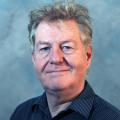PRANKSTERS crowned the statue of one of Irvine's most famous sons with a traffic cone last week.
The statue of Lord Justice General David Boyle, in the town's Castle Street, was adorned with some new headwear, presumably to keep him dry during the rainy season.
It was a sad look for the controversial former MP and judge, who came from one of Ayrshire's wealthiest families and lived from 1772 to 1853.
David Boyle was the judge who sentenced bodysnatcher William Burke to be executed for murder.
In 1828, Burke and his accomplice, William Hare, murdered 16 people in Edinburgh in 10 months and sold their bodies to a surgeon for dissection. The trial caused a public sensation
Boyle was also part of a commission that sentenced two leaders in the Scottish Radical War to be executed for treason.
John Baird and Andrew Hardie were hung at Stirling on September 8, 1820 and then beheaded. This made Boyle very unpopular amongst many in Scotland.

He matriculated at the University of St Andrews in 1787 aged just 14, then the University of Glasgow in 1789.
Boyle became an Advocate in 1793, Solicitor General for Scotland in 1807 and MP for Ayrshire in 1808.
In 1811 he was appointed a Lord of Justiciary, sitting as Lord Boyle. Later in that year he also became Lord Justice Clerk.
After becoming Lord Rector of the University of Glasgow in 1815 he was made a Privy Councillor in 1820 and then Lord Justice General and Constant President of the Court of Session in 1841.
Back home in Irvine, he succeeded to the Shewalton estate in 1837 when his brother John died and he changed his official title to Lord Shewalton.
Shortly after Boyle died, a marble statue of him was installed in Parliament Hall, Edinburgh.
The people of Irvine decided they would like a statue too to go with their new Town House and in 1867 the bronze statue of David Boyle was erected on the pavement at the Parterre across from the Town House.
In 1929, the local council decided to move the statue, in a bid to make the town's pavements narrower for better traffic flow.
This decision caused some debate in the town as David Boyle was still a divisive figure because of his part in the executions of Baird and Hardie. One councillor even called for the statue to be re-erected upside down.
Several sites were considered including Bridgegate and Fullarton Parish Church, but eventually it was moved to spare council land on Castle Street, where it still stands today - albeit with different headwear.






Comments: Our rules
We want our comments to be a lively and valuable part of our community - a place where readers can debate and engage with the most important local issues. The ability to comment on our stories is a privilege, not a right, however, and that privilege may be withdrawn if it is abused or misused.
Please report any comments that break our rules.
Read the rules here